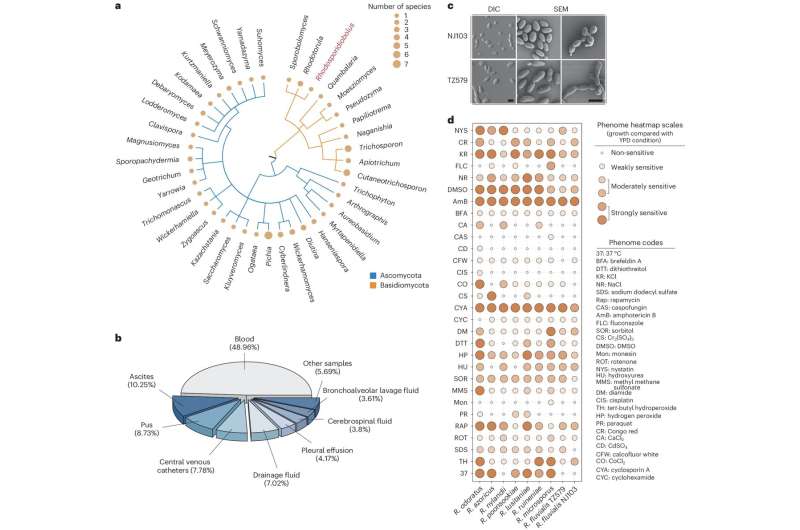Scientists find further evidence that climate change could make fungi more dangerous

A team of medical researchers and infectious disease specialists affiliated with multiple institutions in China, working with a pair of colleagues, one from Singapore, the other from Canada, has found evidence bolstering theories that suggest as the planet warms, fungi could become more dangerous to humans.
In their paper published in the journal Nature Microbiology, the group describes their study of a type of fungi that has evolved to infect humans.
For most of modern history, fungal infections in humans were not considered much of a threat. Besides yeast infections in women, ringworms and nail infections, fungal infections have been few and far between. That has been changing slightly in recent years as doctors have been reporting increases in rare types of fungal infections.
Prior research has suggested the reason fungi have not been more of a threat until now is that they prefer cooler temperatures than are found in and on the bodies of mammals. But that may be changing, as the researchers involved in this new study have found.
Infectious disease experts have been predicting a rise in different types of human fungi infections as the planet warms. They suggest as the environments in which fungi live grow warmer, they will adapt, eventually reaching a point where they will find the human body a reasonable place to live.
The team working in China looked for fungal infections in 96 hospitals in that country over the years 2009 to 2019. They found thousands of fungal strains, one of which had not been documented infecting humans before, and they found it in two unrelated cases. They also found that it was resistant to two of the most common types of therapies used to treat fungal infections.
Intrigued by their findings, they injected blood infected with the same type of fungus collected from the natural environment into lab mice with weak immune systems and found two things; the first was that it thrived, the second was that it mutated into a more aggressive form of itself.
They then exposed the fungal pathogen to temperatures as high as 37°C (human body temperature) in a lab dish, and found that doing so led it to develop resistance to multiple antifungal agents.
More information: Jingjing Huang et al, Pan-drug resistance and hypervirulence in a human fungal pathogen are enabled by mutagenesis induced by mammalian body temperature, Nature Microbiology (2024). DOI: 10.1038/s41564-024-01720-y
Journal information: Nature Microbiology
© 2024 Science X Network'The Last of Us': Fungal infections really can kill, and they're getting more dangerous
No comments:
Post a Comment